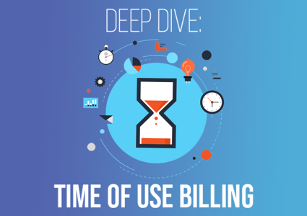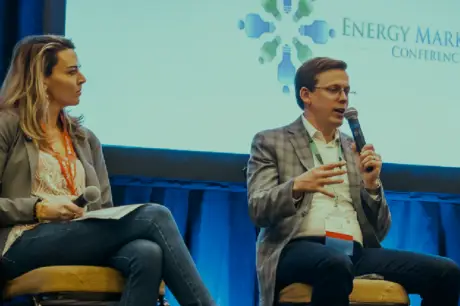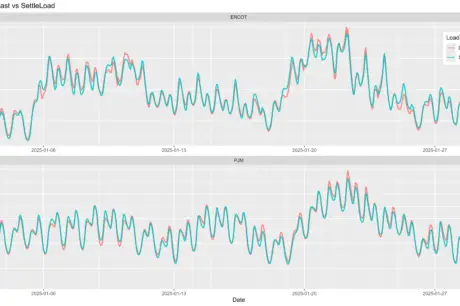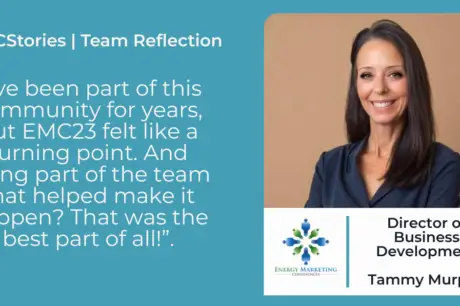Time of Use – or TOU billing brings opportunities for Energy Retailers (REPs) looking to differentiative themselves from their competition and harness new potential. An interview with industry experts. *(1)
Can you speak to some of the benefits that Time of Use brings for both retailers and consumers?
Customers are changing. They have electric vehicles, they have access to the data, and they might have PV solar, they might have demand response etc. By enabling time-of-use products, REPs can sell those price plans along with the services that might accompany them. We’re seeing more and more of it. Everyone benefits along the way. What’s key is access to interval data. It allows a lot of flexibility in the price plans REPs can offer to their customers.
What is account-level forecasting and how does this play into TOU for retail energy providers?
REPs will be able to offer more complex products that make use of TOU to attract customers in different ways. There’s going to be an explosion of data. In the past, they may have dealt with just 12 readings per year per customer, and now there’ll be 35,000 values at the 15-minute interval level, for example. They’ll be able to forecast the usage at a much more granular level, and this also has an impact on the cost to serve. In understanding their existing customer base, REPs are able to identify more profitable customers and less profitable customers. Separately they can give advice on the consumer side and offer more products that reflect a growing sophistication and demand in consumers.
How does complex billing affect TOU with REPs?
Having this explosion of data at the meter level will enable REPs to offer something more targeted and complex. REPs can get a lot more innovative in what they offer to a broader range of customers.
In certain markets, for instance, they might be giving an incentive for a customer with solar panels or with batteries to incentivize them price-wise to make use of that, and that would be reflected in the billing calculations.
What benefits around pricing does this bring to REPs?
The primary benefit of having interval data for pricing is the ability to price actual load and profile as opposed to having a profile assigned to that account and generated using the utility profile associated with that account. You’re getting actual data on consumption and the timing of that consumption. Timing is everything in energy overall because the product costs more during the peak hours and a lot less during off peak. Taking the interval data and translating it into a price is a critical business process that retail suppliers need to support.
How do the vast amounts of processed data effect TOU?
A platform that compiles a vast amount of information is needed, the way power is being generated, the way it’s being consumed – it continues to learn and evolve so that you’re getting a more comprehensive yet specialized look as to how that consumption is being utilized, how it’s being generated, and you’re getting a better feel for what each person’s energy profile is.
Historically, calculations or forecasting have been predominantly based on profiling a customer or a meter based on average values that are shared across a set of meters that share similar characteristics.
Nowadays, each meter, every consumer potentially has a very different profile or a different consumption type. In the world of AI and machine learning, it’s able to identify what those unique characteristics are between those different types of users. For example, my neighbor is no longer going to use the same type of power that I will use even if we shared the same exact schedules and actions throughout the day, because if I have solar panels and my neighbor doesn’t, all of a sudden, my profile may look similar in the consumption aspect of things, but I will now have some generation that I’m not pulling from the grid that my neighbor would.
How do you see energy technology and systems fulfilling the requirements of energy REPs in the future?
There’ll be other sources of information feeding into what’s happening behind the meter. Laying a good foundation for processing huge amounts of data will enable REPs to take on that data and be able to improve further what REPs or other organizations can offer to consumers or customers, related to behind the meter. It’s a foundation for the future.
All of this means better insights so you can make better decisions for your business and drive better results.
*(1) Jim Roberts, Senior Technology Manager, ESG, Bob Potter, VP Business Development, ESG and Rahim Visram, Solutions Engineer, ESG, along with Fred Davis, Marketing Manager, Innowatts
For the full podcast conversation, https://esgglobal.com/n/timeofuse/












